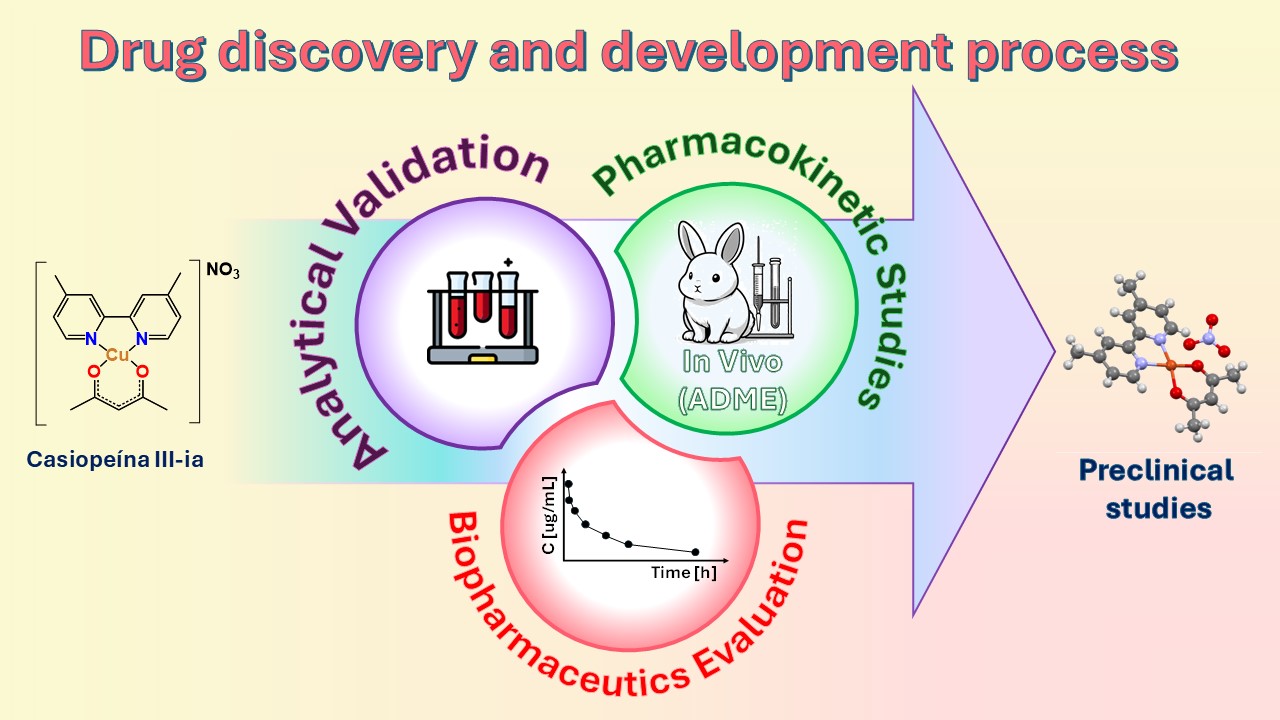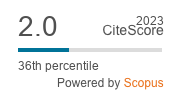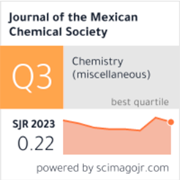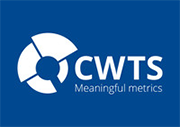Development and Validation of a Liquid Chromatographic Method for CasiopeinaIII-ia® in Rabbit Blood and its Application in Pre-clinical Pharmacokinetic Research
DOI:
https://doi.org/10.29356/jmcs.v69i4.2397Keywords:
Antineoplastic, Casiopeína III-ia, validation HPLC-UV, pharmacokinetics, copper compoundAbstract
Abstract. A rapid and simple high-performance liquid chromatography (HPLC) method using extraction with zinc sulfate was developed for determining Casiopeina III-ia (CasIII-ia) levels and then validated for the linear 10-120 µg/mL range in 200 µL of rabbit blood. An HPLC method for quantifying CasIII-ia in plasma has been previously reported; however, studies on its distribution found that CasIII-ia concentrations were higher in whole blood than in plasma. The analysis was performed using the following parameters: methanol-sodium phosphate buffer (pH 6.5; 0.01 M) (40:60 v/v) mobile phase, using a 250 x 4.6 mm I.D Symmetry® C18 column and a particle size of 5 µm (Waters Associates, Milford, MA, USA) with a C18 5 µm guard column (Phenomenex®) was kept at a isocratic flow-rate of 0.8 ml/min, room temperature at a wavelength of 262 nm. Acetaminophen was used as the internal standard. The results showed that the assay is sensitive at 10 µg/mL. A linear relationship of r2=0.9954 for Cass-III-ia was plotted against concentrations ranging from 10 to 120 µg/mL; the analytical method complies with linearity. The maximum intra-day relative standard deviation (RSD) was 5.10 %. An average 84.8 % intra-day (n=15) and 92.5 % inter-day (n=30) recovery % of CasIII-ia was recovered for the whole blood samples. The results demonstrated the applicability of this method for obtaining it’s in vitro distribution and also it´s for use in pharmacokinetic studies at the preclinical level on rabbits. The present study shows an assay rapid, simple, precise, and accurate for quantifying Cas III-ia in rabbit whole blood. The pharmacokinetic study, carried out in rabbits, obtained the following pharmacokinetic parameters: (kel) = 0.0150 min-1; half-life time (T1/2) = 53.9 min; with an apparent volume of distribution (Vd) = 202.8 mL; clearance (Cl) = 2.0 mL /mi; and area under the curve (AUC)=23163.8 µg/mL.min. The results contribute to the preclinical characterization of Cas III-ia.
Resumen. Se desarrolló un método rápido y sencillo por cromatografía líquida de alta resolución (HPLC) utilizando la extracción por precipitación con sulfato de zinc para determinar los niveles de Casiopeína III-ia (CasIII-ia), se validó en un rango lineal de 10-120 mg/mL en 200 µL de sangre de conejo. Un método HPLC para cuantificar Cas III-ia en plasma ha sido reportado previamente; sin embargo, estudios realizados sobre su distribución encontraron que las concentraciones de Cas III-ia eran más altas en sangre total que en plasma. El análisis se realizó utilizando los siguientes parámetros: fase móvil fue metanol y solución amortiguadora de fosfato sódico (pH 6,5; 0,01 M) (40:60 v/v) a un flujo de 0,8 mL/min, temperatura ambiente a una longitud de onda de 262 nm. Se utilizó acetaminofén como estándar interno. Los resultados obtenidos mostraron que el ensayo es sensible a 10 µg/mL. Se encontró una relación lineal de r2=0.9954 para CasIII-ia contra concentraciones que van de 10 a 120 µg/mL; el método analítico cumple con la linealidad. La desviación relativa estándar (RSD) fue de 5.10 %. La media del recobro fue de 84.8 % intra-dia (n=15) y de 92.5 % inter-día (n=30) para Cas III-ia en muestras de sangre total. Los resultados demuestran la aplicabilidad de este método para la obtención de la distribución in vitro y para su uso en estudios farmacocinéticos a nivel preclínico en conejos. El presente estudio muestra un ensayo rápido, sencillo, preciso y exacto para cuantificar CasIII-ia en sangre total de conejo. El estudio farmacocinético, realizado en conejos se obtuvieron los siguientes parámetros farmacocinéticos: (kel) = 0,0150 min-1; tiempo de semivida (T1/2) = 53,92 min; volumen aparente de distribución (Vd) = 202,8 mL; aclaramiento (Cl) = 2,0 mL /mi; y área bajo la curva (AUC)=23163,8 µg/mL.min. Los resultados contribuyen a la caracterización preclínica de Cas III-ia.
Downloads
References
1. Mjos, K.D.; Orvig, C. Chem. Rev. 2014, 114, 4540–4563. DOI: https://doi.org/10.1021/cr400460s.
2. Serment-Guerrero J.; Bravo-Gomez M. E.; Lara-Rivera E.; Ruiz-Azuara L. J. Inor. Biochem. 2017, 166, 68-753. DOI: https://doi.org/10.1016/j.jinorgbio.2016.11.007.
3. Aguilar-Jiménez Z.; Espinoza-Guillén A.; Resendiz-Acevedo K.; Fuentes-Noriega I.; Carmen Mejía C.; Ruiz-Azuara L. Review Inorganics. 2023, 11, 1-23. DOI: https://doi.org/10.3390/inorganics11100394.
4. Anthony, E.J.; Bolitho, E.M.; Bridgewater, H.E.; Carter, O.W.L.; Donnelly, J.M.; Imberti, C.; Lant, E.C.; Lermyte, F.; Needham, R.J.; Palau, M.; et al. Chem. Sci. 2020, 11, 12888–12917. DOI: https://doi.org/10.1039/D0SC04082G.
5. Nayeem, N.; Contel, M. Chem. Eur. J. 2021, 27, 8891–8917. DOI: https://doi.org/10.1002/chem.202100438.
6. Ndagi, U.; Mhlongo, N.; Soliman, M.E. Drug Des. Devel Ther. 2017, 11, 599–616. DOI: https://doi.org/10.2147/DDDT.S119488.
7. Lucaciu, R.L.; Hangan, A.C.; Sevastre, B.; Oprean, L.S. Molecules. 2022, 27, 6485 DOI: https://doi.org/10.3390/molecules27196485.
8. Fuentes I.; L. Ruiz-Ramírez L.; Tovar A.; Rico H.; Gracia I. J. Chrom. B Anal. Tech. Bio. Life Sci. 2002, 772, 115-121. DOI: https://doi.org/10.1016/S1570-0232(02)00064-8.
9. Reyes, L.; Fuentes I.; Ruiz-Ramírez, L.; Macías, L. J. Chrom. B Anal. Tech. Bio. Life Sci. 2003, 791, 111-116. DOI: https://doi.org/10.1016/S1570-0232(03)00226-5.
10. https://www.ema.eu-ropa.eu/en/ich-m10-bioanalytical-method-validation-scientific-guideline, accessed in June 2022.
11. Vértiz, G.; García-Ortuño, L. E.; Bernal, J. P.; Bravo-Gómez, M. E.; Lounejeva, Elena.; Huerta, A.; Ruiz-Azuara, L. Fund. & Clin. Pharm. 2014, 28, 78-87. DOI: https://doi.org/10.1111/j.1472-8206.2012.01075.x.
12. García-Ramos, J. C.; Vértiz-Serrano,G.; Macías-Rosales, L.; Galindo-Murillo,R.; Toledano-Magaña, Y.; Bernal, J.P.; Fernando Cortés-Guzmán,F.; Ruiz-Azuara, L. Eur, J. Inor. Chem. 2017, 12, 1728-1736. DOI: https://doi.org/10.1002/ejic.201601199.
13. Cañas-Alonso, R. C.; Fuentes-Noriega, I.; Ruiz-Azuara, L. J. Mex. Chem. Soc. 2013, 57, 239-244. S1870-249X2013000300012.
14. Cañas-Alonso R.C.; Fuentes-Noriega, I.; Ruiz-Azuara, L. J. Bioanal. Biomed. 2010, 2, 28–34. DOI: https://doi.org/10.4172/1948-593X.1000018.
15. Campero, P. C.; Bravo, G. M. E.; Hernández, O. S. L.; Olguin, R. S. R.; Espinosa, A. J. J.; Ruiz-Azuara, L. Toxicol. In Vitro. 2016, 33, 16–22. DOI: https://doi.org/10.1016/j.tiv.2016.02.008.
16. García-Ramos,J. C.; Toledano-Magaña, Y.; Gutiérrez, A. G.;Vázquez-Aguirre, A.; Alonso-Sáenz, L.; Gómez-Vidales, V.; Flores-Álamo, M.; Mejía, C.; Ruiz-Azuara, L. BioMetals. 2017, 30, 43–58. DOI: https://doi.org/10.1007/s10534-016-9983-8.
17. Paul, R. V.; Edginton, M.; Edginton A. N. Cpt. Pharmacom. Syst Pharmacol. 2019, 8, 835–844 DOI: https://doi.org/10.1002/psp4.12456.
18. https://www.dof.gob.mx/nota_detalle.php?codigo=5314833&fecha=20/09/2013#gsc.tab=0, accessed in June 2022.
19. https://www.fda.gov/media/70958/download, accessed in June 2022.
20. Gary, M.; Harkness, J. E.; Wagner, J.E, in: The Biology and Medicine of Rabbits and Rodents, 4th edn, 2015.


Downloads
Published
Issue
Section
License
Copyright (c) 2025 N. Vara-Gama, K. Rubio-Carrasco, J. Antonio-Jarquin, H. Rico-Morales, L. Ruiz-Azuara, I. Fuentes-Noriega

This work is licensed under a Creative Commons Attribution-NonCommercial 4.0 International License.
Authors who publish with this journal agree to the following terms:
- Authors retain copyright and grant the journal right of first publication with the work simultaneously licensed under a Creative Commons Attribution License that allows others to share the work with an acknowledgement of the work's authorship and initial publication in this journal.
- Authors are able to enter into separate, additional contractual arrangements for the non-exclusive distribution of the journal's published version of the work (e.g., post it to an institutional repository or publish it in a book), with an acknowledgement of its initial publication in this journal.









